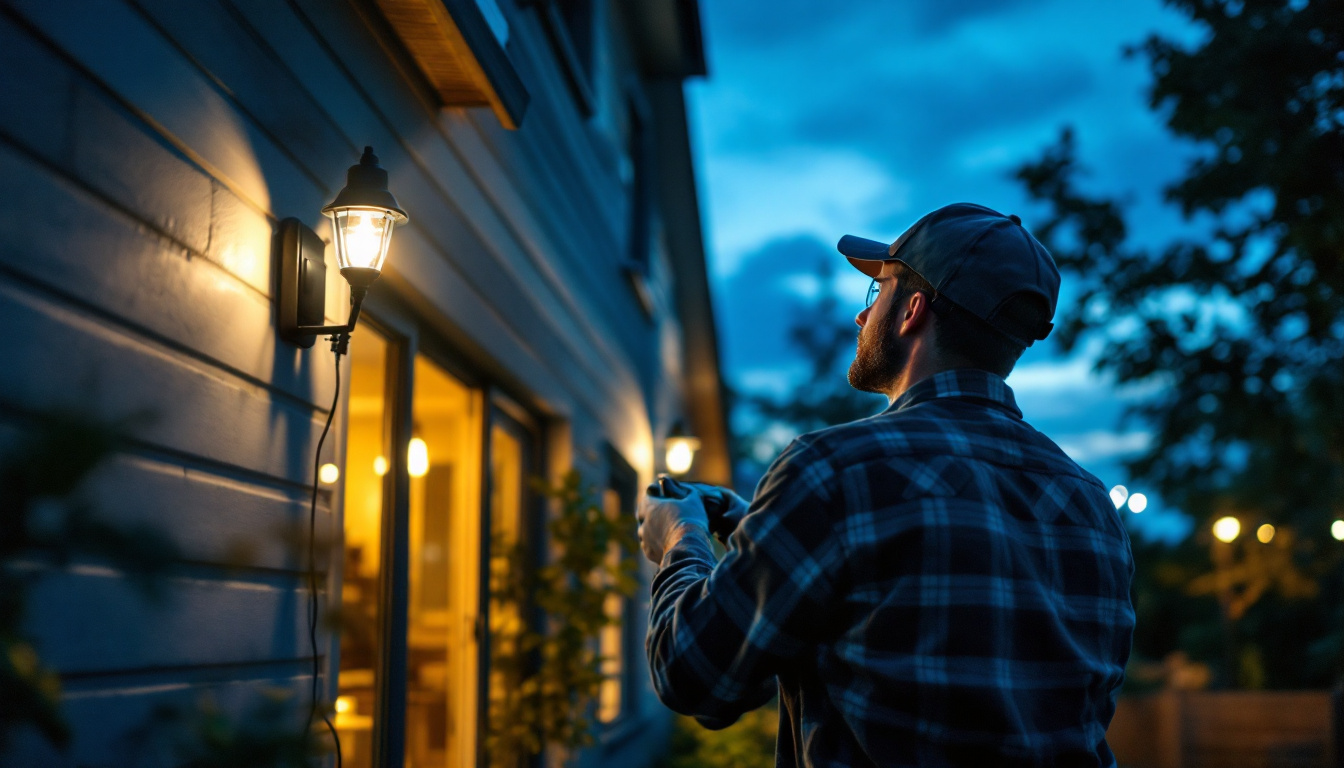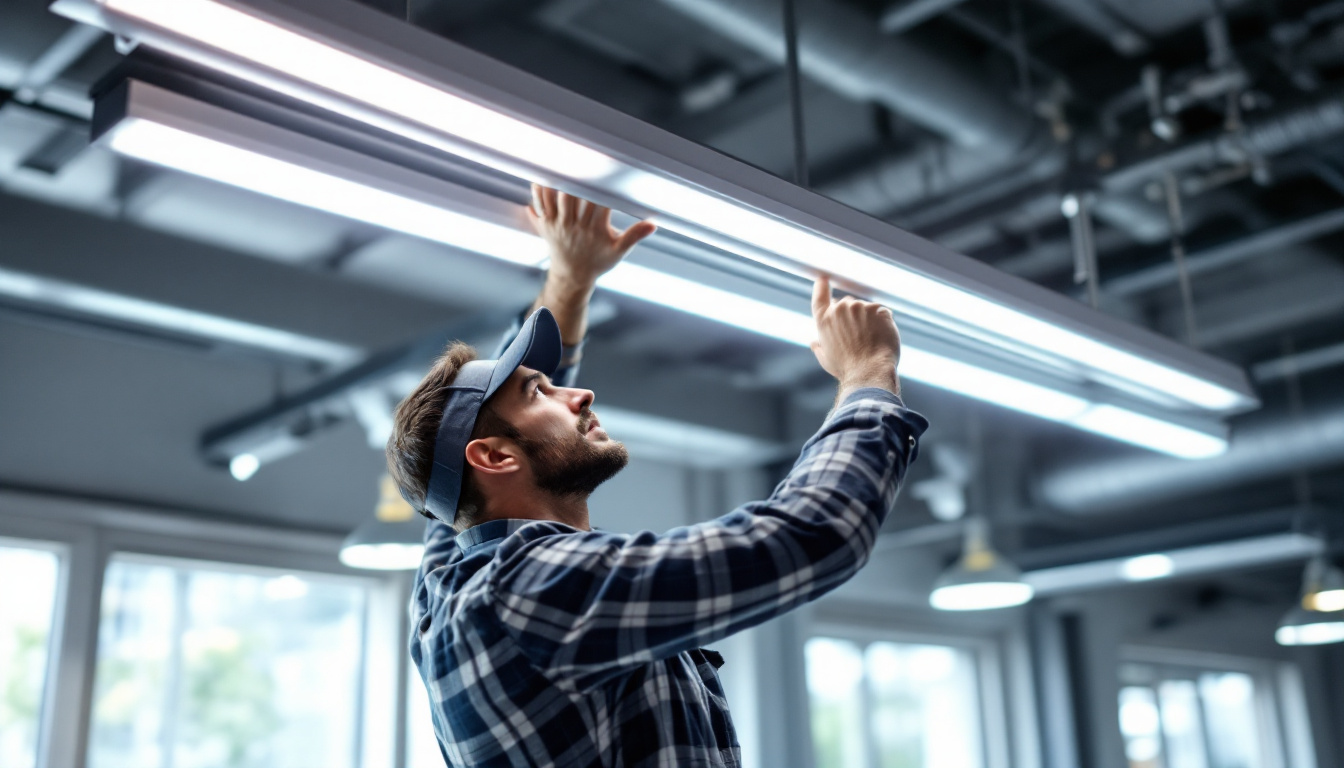

In the world of electrical installations, the lighting junction box plays a crucial role in ensuring safety and functionality. For lighting contractors, understanding the nuances of junction boxes can help avoid common pitfalls that may lead to costly mistakes or safety hazards. This guide aims to provide essential insights and practical tips for navigating the complexities of lighting junction boxes.
Before diving into the specifics, it is essential to grasp what a junction box is and its purpose in lighting installations. A junction box is an enclosure that houses electrical connections, protecting them from damage and preventing electrical hazards. It serves as a critical point where wires converge, allowing for safe distribution of power to various lighting fixtures. The importance of junction boxes cannot be overstated, as they play a vital role in maintaining the integrity of electrical systems, reducing the risk of short circuits and electrical fires.
In addition to their protective functions, junction boxes also facilitate easier troubleshooting and maintenance. When issues arise in a lighting circuit, having a junction box allows electricians to quickly access connections without having to dismantle extensive wiring. This accessibility not only saves time but also minimizes disruption to the surrounding environment, making repairs more efficient.
There are several types of junction boxes, each designed for specific applications. The most common types include:
Choosing the right type of junction box is crucial for ensuring compliance with local electrical codes and enhancing the longevity of the installation. Additionally, understanding the specific environment in which the junction box will be used can guide your choice, ensuring that it meets both safety standards and practical needs.
A junction box typically consists of several key components:
Understanding these components is vital for proper installation and maintenance of the junction box, ensuring that it functions effectively over time. Furthermore, familiarity with the installation process can empower homeowners and electricians alike to make informed decisions, ultimately leading to safer and more reliable electrical systems. Regular inspections of junction boxes can also help identify potential issues before they escalate, reinforcing the importance of proactive maintenance in electrical safety.
Even seasoned contractors can encounter pitfalls during the installation of junction boxes. Awareness of these common mistakes can help prevent issues that may arise later.
One of the most frequent mistakes is selecting a junction box that is either too small or too large for the application. A box that is too small may lead to overcrowding, increasing the risk of overheating and electrical failures. Conversely, an oversized box can complicate installation and may not meet aesthetic standards.
To avoid this, always refer to the National Electrical Code (NEC) guidelines for box fill calculations. This ensures that the junction box can accommodate the number of wires and devices without compromising safety. Furthermore, when selecting the size, consider not just the current load but also any future expansions. Anticipating potential upgrades can save time and resources in the long run, as it eliminates the need for reinstallation or additional modifications.
Grounding is a critical aspect of electrical safety that should never be overlooked. Failing to properly ground a junction box can lead to dangerous situations, including electrical shock or fire hazards. It is essential to connect the grounding wire to the box and ensure that all fixtures connected to the box are also grounded.
When using metal junction boxes, grounding becomes even more crucial, as metal can conduct electricity. Ensure that all connections are secure and compliant with local codes. Additionally, consider the use of grounding screws or clips that can provide a reliable connection point for grounding wires. Regular inspections of grounding connections can also help in identifying any wear or corrosion that may compromise safety over time.
For outdoor lighting applications, it is vital to use weatherproof junction boxes. Inadequate sealing can lead to moisture ingress, resulting in corrosion and electrical failures. Always check the manufacturer’s specifications to ensure that the junction box is rated for outdoor use and properly sealed against the elements.
Additionally, consider using silicone sealant around the edges of the box and the conduits to provide an extra layer of protection against moisture. It’s also wise to evaluate the installation location; placing the junction box in a more sheltered area can further reduce exposure to harsh weather conditions. Furthermore, using covers that are designed to withstand UV rays can help prolong the life of the junction box and its components, ensuring a reliable and safe electrical system for years to come.
To ensure a successful installation, adhering to best practices is essential. These practices not only enhance safety but also improve the overall efficiency of the electrical system.
Every region has specific electrical codes that must be followed during installation. Familiarizing oneself with these regulations is crucial for compliance and safety. Local codes may dictate the types of junction boxes allowed, their placement, and the methods of installation.
Consulting with local authorities or a licensed electrician can provide clarity on these regulations, ensuring that all installations meet the required standards. Furthermore, staying updated on any changes to these codes is important, as they can evolve based on new technologies or safety findings. Regular training sessions or workshops can be beneficial for electricians to remain informed about the latest regulations and best practices in the field.
Investing in high-quality junction boxes and components is essential for long-term reliability. Cheap materials may save costs initially but can lead to failures and safety hazards down the line. Look for products that meet industry standards and have a good reputation among contractors.
Additionally, consider the environmental conditions where the junction box will be installed. For example, in coastal areas, corrosion-resistant materials may be necessary to withstand salty air. Similarly, in areas prone to extreme temperatures, selecting junction boxes rated for those conditions can prevent issues such as warping or cracking, ensuring that the electrical system remains functional and safe over time. Moreover, opting for energy-efficient components can also contribute to a more sustainable installation, reducing overall energy consumption.
Proper labeling of junction boxes and their connections is a practice that can save time and confusion in the future. Clearly label each wire and connection to indicate its purpose, which is particularly useful during troubleshooting or when modifications are needed.
Documenting the installation process, including any changes made from the original plans, can also be beneficial. This documentation serves as a reference for future work and can assist other contractors who may work on the system later. Additionally, maintaining a detailed log of maintenance activities and inspections can help ensure ongoing compliance with safety standards and can be invaluable during audits or inspections. This proactive approach not only enhances the longevity of the electrical system but also fosters a culture of accountability and professionalism among those involved in the installation and maintenance processes.
Regular maintenance and inspection of junction boxes are vital for ensuring ongoing safety and functionality. Over time, wear and tear can occur, leading to potential hazards.
Conducting routine inspections of junction boxes can help identify issues before they escalate. Look for signs of damage, corrosion, or loose connections. Pay particular attention to outdoor boxes, as they are more susceptible to environmental factors.
During inspections, ensure that all covers are securely fastened and that there are no signs of moisture ingress. If any issues are detected, address them promptly to prevent further complications.
Keeping junction boxes clean is also important. Dust and debris can accumulate over time, which may hinder ventilation and lead to overheating. Use a soft brush or cloth to gently clean the exterior and interior of the box, ensuring that no moisture is trapped inside.
For metal boxes, check for signs of rust or corrosion. If corrosion is present, consider replacing the box to maintain safety and functionality.
In conclusion, understanding the intricacies of lighting junction boxes is essential for lighting contractors. By avoiding common pitfalls, adhering to best practices, and conducting regular maintenance, contractors can ensure the safety and reliability of their installations.
Investing time in education and awareness of junction box requirements not only enhances the quality of work but also builds a reputation for professionalism and reliability in the industry. As technology and standards evolve, staying informed about the latest developments in junction box design and installation will continue to be a critical aspect of successful lighting contracting.
Ready to elevate your lighting installations with the best in the business? Look no further than LumenWholesale for all your junction box needs and more. Our extensive selection of spec-grade lighting products ensures you have access to the highest quality materials for your projects. With unbeatable wholesale prices and the convenience of free shipping on bulk orders, you can trust LumenWholesale to provide the perfect blend of quality, affordability, and convenience. Make the smart choice and partner with us for Wholesale Lighting at the Best Value, ensuring your installations are safe, reliable, and impressive.

Discover how lighting contractors can enhance their profitability by optimizing electric socket installations.

Discover innovative strategies and expert tips from lighting contractors on enhancing outdoor spaces with LED lanterns.

Discover why staying informed about the latest outdoor flood light bulbs is crucial for lighting contractors.

Discover the significance of 4 ft fluorescent lights for lighting contractors.
Get notified when NEW deals are released.
Optimize your budget with wholesale discounts.
Only top-quality, specification-grade lighting products.
No additional costs at checkout - what you see is what you pay.
We understand the unique needs of contractors.